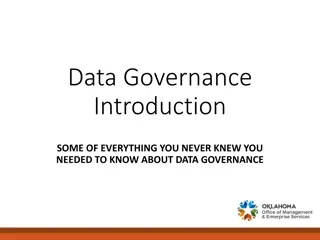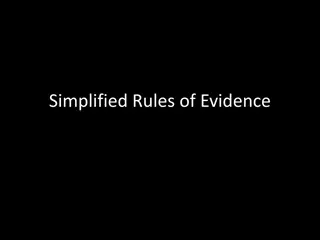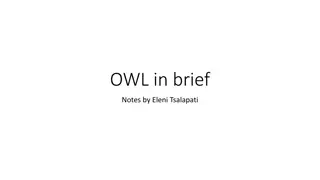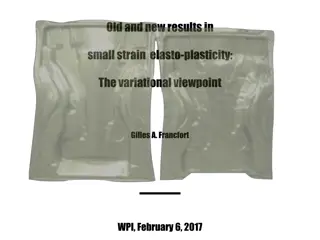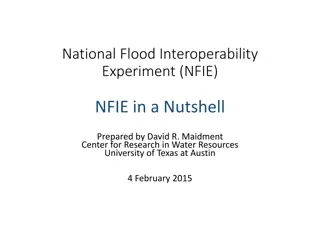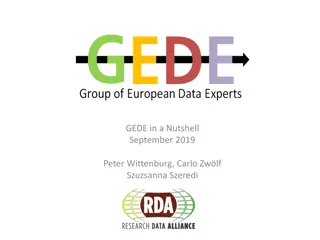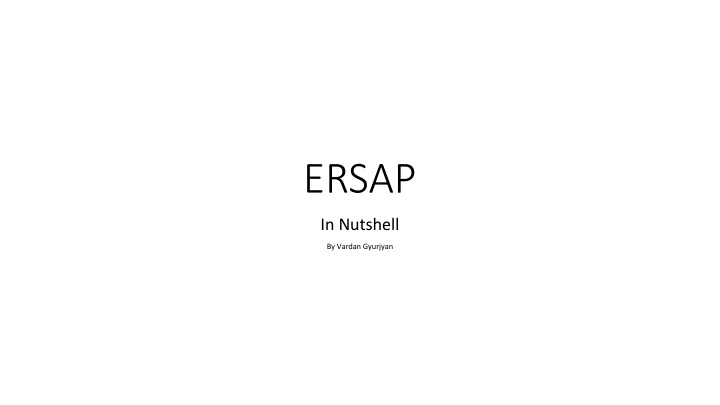
Overview of ERSAP Framework and Actor Model Advantages
Learn about ERSAP framework, a reactive event-driven actor system for data processing, and the advantages of the actor model including scalability, fault isolation, and hardware heterogeneity. Explore how actors communicate, data stream pipes, application orchestrator features, and INDRA-ASTRA data pipeline prototype modifications.
Download Presentation

Please find below an Image/Link to download the presentation.
The content on the website is provided AS IS for your information and personal use only. It may not be sold, licensed, or shared on other websites without obtaining consent from the author. If you encounter any issues during the download, it is possible that the publisher has removed the file from their server.
You are allowed to download the files provided on this website for personal or commercial use, subject to the condition that they are used lawfully. All files are the property of their respective owners.
The content on the website is provided AS IS for your information and personal use only. It may not be sold, licensed, or shared on other websites without obtaining consent from the author.
E N D
Presentation Transcript
ERSAP In Nutshell By Vardan Gyurjyan
In a few words Reactive event driven actors (micro-service), communicating data through data-stream pipes, controlled by the application orchestrator. Stream of data quanta, flowing through directed graph of actors. Application is a network of independent actors. Actor = Service engine + Data processing station S4 Data processing station S5 S8 S9 S10 Service engine S1 S2 Data stream pipe S3 Data moves across actors not instructions S6 S7 Actors communicate with each other by exchanging the data quanta across predefined connections by message passing, where connections are specified externally to actors. User provided data processing single-threaded algorithms (engines) are presented as fully scalable actors in the framework. Orchestrator 2
Actor = User engine + Data processing station (DPS) DPS provides Runtime Environment Multi-threading Engine follows data-in/data-out interface. Engine gets JSON object for run-time configuration. DPS Configuration Communication User provided code Engine Data Processing Actor (micro-services) Data Processing Station 3
Data Stream Pipe Publish/Subscribe P2P Communication Transient Data Meta-description Serialization 0MQ/POSIX_SHM/Data-Grid Data-Stream Pipe 4
Application Orchestrator Command-Line Interface Application Monitoring, Real-time Benchmarking Hardware Optimizations Application Deployment and Execution Service Registration/Discovery Orchestrator Exception Logging and Reporting Data-Set Handling and Distribution Farm (batch or cloud) Interface 5
Advantages of the actor model Artifacts are small, simple and independent Easier to understand and develop Reduced develop-deploy-debug cycle Easy to migrate to data Scales independently Independent optimizations Improves fault isolation Easy to embrace hardware heterogeneity Eliminates long term commitment to a single technology stack. 6
INDRA-ASTRA data pipeline ERSAP prototype alkaid.jlab.org ERSAP Aggregator service Decoder service Persistency service JANA-Processor service ALICE code is modified to stream data 7

